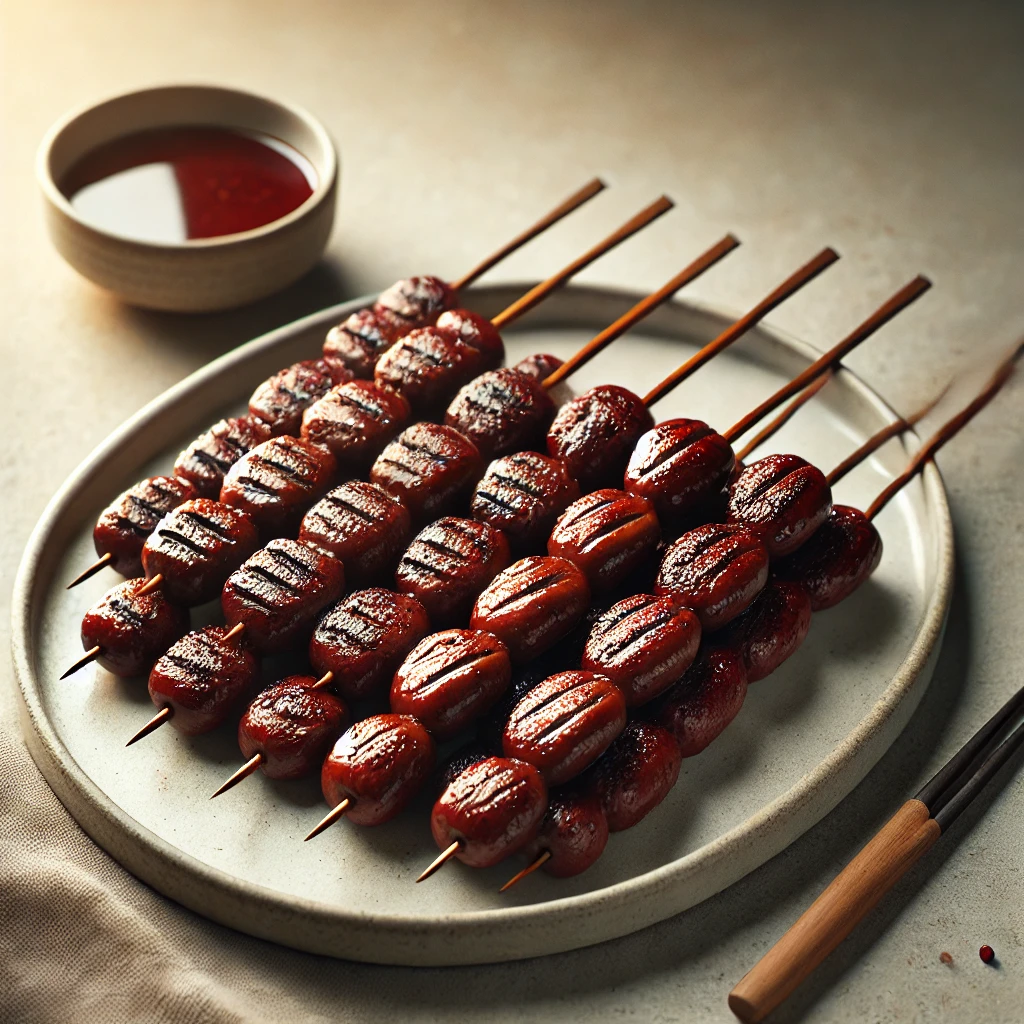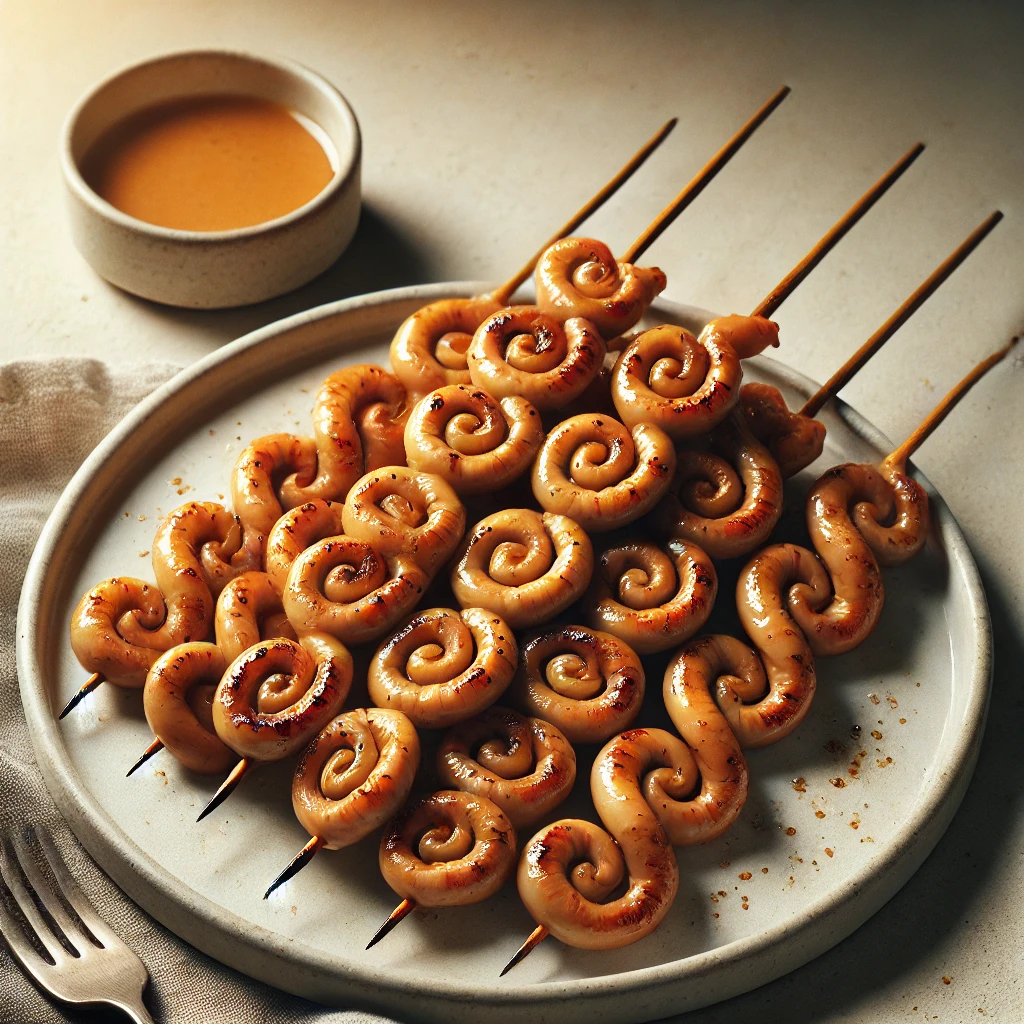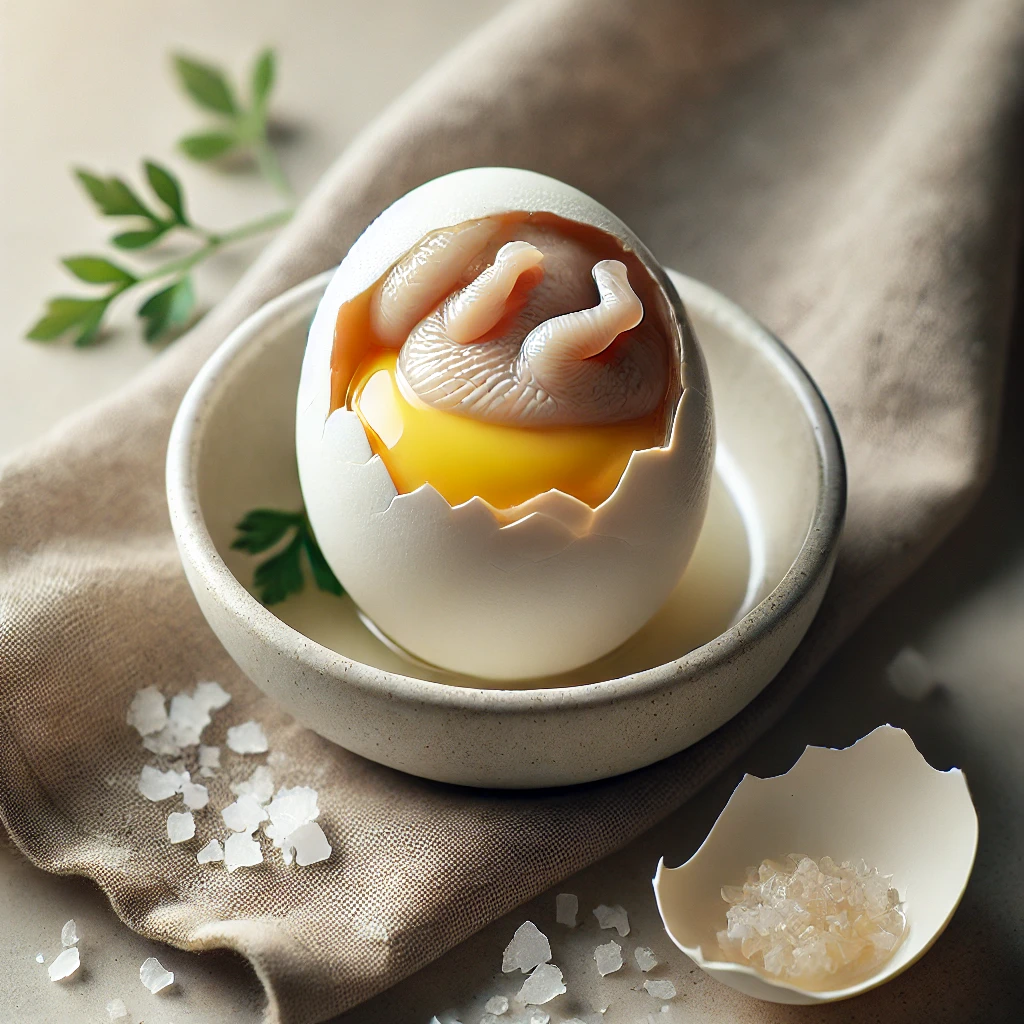Have you ever wondered what happens to the parts of a chicken that don’t make it to your dinner plate? In the Philippines, a culinary tradition has emerged that transforms an often-overlooked ingredient into a mouthwatering delicacy. Enter Betamax, a dish that takes its name from the popular video format of the 1980s due to its rectangular shape. This grilled chicken blood dish is not for the faint of heart, but for the adventurous foodie, it offers a unique and flavorful experience that challenges preconceptions about what constitutes delicious street food.
Betamax is a testament to the Filipino culinary philosophy of “nose-to-tail” eating, where every part of the animal is utilized and transformed into something delectable. This approach not only reduces waste but also creates unexpected culinary treasures. As you bite into a piece of Betamax, you’ll discover a world of textures and flavors that might surprise you – a crispy exterior giving way to a soft, almost custard-like interior, all infused with a savory depth that only offal can provide.
While this recipe may not cater to vegetarian or vegan diets, it is naturally gluten-free and low in carbohydrates. For those looking to explore authentic Filipino street food or expand their culinary horizons, Betamax offers a unique and memorable experience. So, let’s dive into the world of Betamax and learn how to bring this intriguing dish to life in your own kitchen.
Recipe Ingredients
To create this Filipino street food delicacy, you’ll need the following ingredients:
| Ingredient | Quantity |
|---|---|
| Fresh chicken blood | 2 cups |
| Salt | 1 teaspoon |
| Ground black pepper | 1/2 teaspoon |
| Garlic powder | 1/2 teaspoon |
| Onion powder | 1/2 teaspoon |
| Soy sauce | 2 tablespoons |
| White vinegar | 1 tablespoon |
| Cooking oil | For greasing |
Optional ingredients for serving:
- Spicy vinegar dipping sauce
- Chopped green onions
- Lime wedges
Recipe Instructions
Follow these steps to prepare your own Betamax at home:
- Prepare the blood:
In a large bowl, combine the fresh chicken blood, salt, black pepper, garlic powder, and onion powder. Mix well to ensure the seasonings are evenly distributed. - Add liquid seasonings:
Pour in the soy sauce and white vinegar. Stir gently to combine, being careful not to create too many bubbles in the mixture. - Prepare the mold:
Lightly grease a rectangular baking dish or pan (approximately 9×13 inches) with cooking oil. This will help prevent the blood from sticking during the cooking process. - Pour and set:
Carefully pour the seasoned blood mixture into the prepared mold. Use a spatula to spread it evenly, ensuring a consistent thickness throughout. - Refrigerate:
Cover the mold with plastic wrap and refrigerate for at least 2 hours, or until the blood has fully coagulated and set firm. - Prepare for grilling:
Once set, remove the blood from the refrigerator and carefully turn it out onto a cutting board. Using a sharp knife, cut the block into smaller rectangular pieces, about 2×3 inches each. - Preheat the grill:
Heat your grill or grill pan to medium-high heat. If using a charcoal grill, wait until the coals are covered with white ash for the ideal cooking temperature. - Grill the Betamax:
Place the blood rectangles on the preheated grill. Cook for about 3-4 minutes on each side, or until they develop a crispy, charred exterior while remaining soft inside. - Serve:
Transfer the grilled Betamax to a serving plate. Serve immediately with spicy vinegar dipping sauce, chopped green onions, and lime wedges on the side.
Recipe Tips & Variations
To ensure the best results and explore different flavor profiles, consider these tips and variations:
- Freshness is key: Always use the freshest chicken blood you can find. If possible, source it from a reputable butcher or poultry farm on the day you plan to prepare the dish.
- Texture control: The consistency of your Betamax can be adjusted by varying the cooking time. For a firmer texture, cook the blood for a longer period before refrigerating. For a softer, more custard-like interior, reduce the initial cooking time slightly.
- Flavor variations: Experiment with different seasonings to create your own unique Betamax flavor profile. Try adding paprika for a smoky note, cayenne pepper for heat, or finely chopped fresh herbs like cilantro or parsley for a fresh twist.
- Cooking methods: While grilling is traditional, you can also pan-fry Betamax for a similar effect. Heat a non-stick skillet over medium-high heat and cook the blood rectangles for 2-3 minutes on each side.
- Storage: Cooked Betamax can be stored in an airtight container in the refrigerator for up to 2 days. Reheat gently in a pan or microwave before serving.
Nutritional Information
While exact nutritional values may vary depending on specific ingredients and preparation methods, here’s an approximate nutritional breakdown for one serving of Betamax (about 2-3 pieces):
| Nutrient | Amount |
|---|---|
| Calories | 120 |
| Protein | 20g |
| Fat | 4g |
| Carbohydrates | 1g |
| Iron | 15% DV |
| Vitamin B12 | 25% DV |
Please note that chicken blood is high in protein and iron, making it a nutrient-dense food. However, it’s also high in cholesterol, so moderation is key.
Conclusion
Betamax: Grilled Chicken Blood is more than just a dish – it’s a gateway to understanding Filipino culinary culture and the art of resourceful cooking. As I prepared this recipe for the first time, I was struck by the transformation of a humble ingredient into something truly delicious. The contrast between the crispy exterior and the soft interior, coupled with the deep, savory flavor, was a revelation that challenged my preconceptions about offal dishes.
I encourage you to step out of your culinary comfort zone and give Betamax a try. Whether you’re a seasoned adventurous eater or someone looking to expand your palate, this dish offers a unique experience that you won’t soon forget. As you savor each bite, you’ll not only be enjoying a delicious meal but also participating in a tradition that honors the whole animal and reduces food waste.
After you’ve tried this recipe, I’d love to hear about your experience. Did you enjoy the flavors and textures? Did you make any interesting variations? Share your thoughts and photos on social media using #BetamaxAdventure or leave a comment below. And if you’re hungry for more Filipino street food recipes, be sure to check out our other articles on dishes like Isaw (grilled chicken intestines) and Adidas (grilled chicken feet). Happy cooking and bon appétit!
Additional Elements
Related recipes and pairings:
- Isaw (Grilled Chicken Intestines)
- Adidas (Grilled Chicken Feet)
- Garlic Rice
- Ensaladang Talong (Eggplant Salad)
Serving suggestions:
Betamax is typically served as a street food snack or appetizer. For a complete meal, consider pairing it with garlic rice and a side of pickled vegetables or a light salad to balance the richness of the dish.
Equipment recommendations:
- Rectangular baking dish or pan (9×13 inches)
- Grill or grill pan
- Sharp knife
- Mixing bowls
- Whisk or mixing spoon
- Tongs for grilling
Historical and cultural context:
Betamax, like many Filipino street foods, emerged from a culture that values resourcefulness and minimal waste. The dish’s name is a playful reference to the Betamax video cassette format popular in the 1980s, drawing a comparison between the rectangular shape of the blood cakes and the video tapes. This naming convention is common in Filipino street food culture, where clever and often humorous names are given to various dishes.
The consumption of animal blood has been a part of Filipino cuisine for centuries, predating Spanish colonization. Blood dishes, known collectively as “dinuguan,” are found in various forms throughout the Philippines, with each region having its own unique preparation methods. Betamax represents a modern, street food adaptation of this culinary tradition.
In Filipino culture, street food is more than just a quick snack – it’s a social experience. Betamax and other similar dishes are often enjoyed in the company of friends and family, often paired with cold beverages and lively conversation. The act of eating these unique dishes is seen as a bonding experience and a way to connect with one’s cultural heritage.
Moreover, dishes like Betamax highlight the Filipino approach to sustainability in cooking. By utilizing parts of the animal that might otherwise be discarded, Filipino cuisine demonstrates a respect for the animal and a commitment to reducing food waste. This nose-to-tail approach not only creates interesting and flavorful dishes but also promotes a more sustainable and ethical approach to meat consumption.
As you prepare and enjoy Betamax, remember that you’re not just cooking a meal – you’re participating in a rich cultural tradition that spans generations. It’s a testament to the creativity, resourcefulness, and adventurous spirit of Filipino cuisine.
Disclaimer: This recipe involves the use of raw animal blood. Please ensure that all ingredients are sourced from reputable suppliers and handled with proper food safety practices. Consumption of raw or undercooked animal products may increase the risk of foodborne illness. This recipe is provided for informational purposes only and should be prepared at the reader’s own risk. If you notice any inaccuracies in this blog post, please report them so we can correct them promptly.




